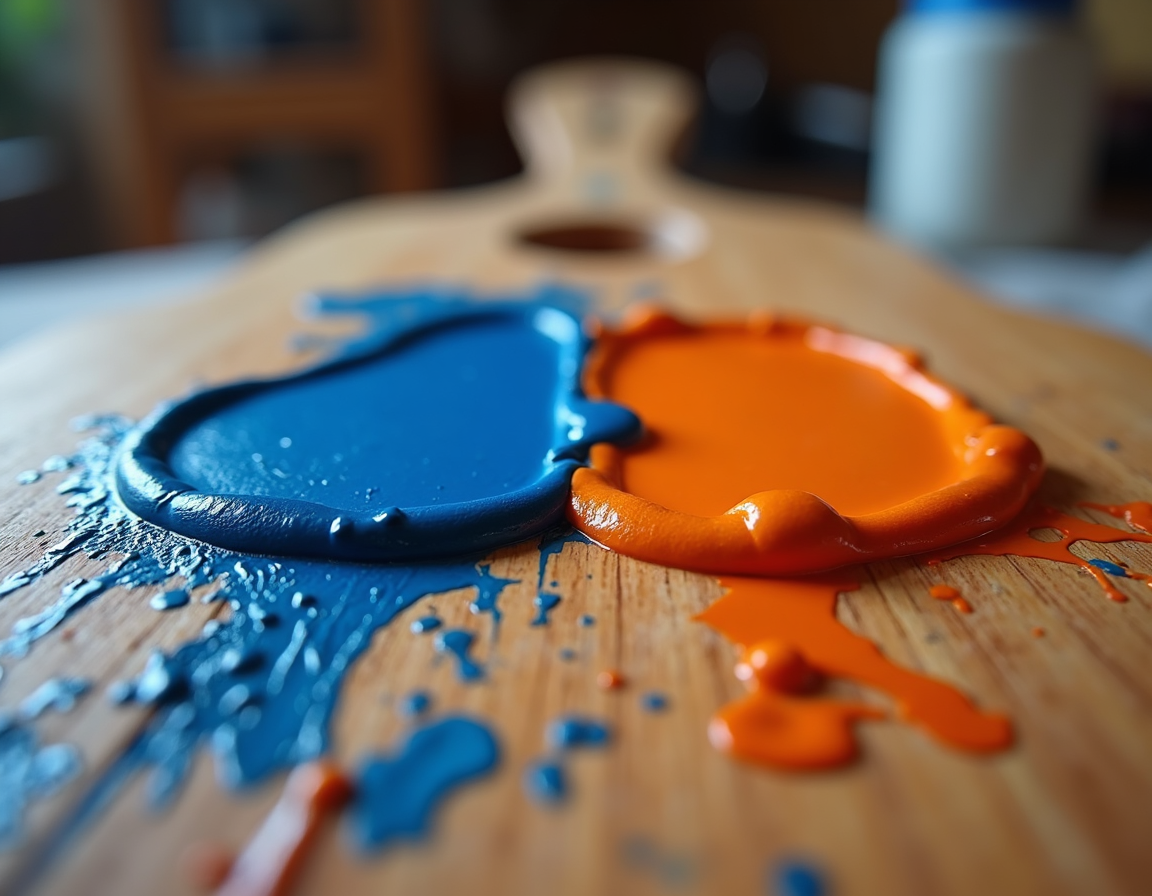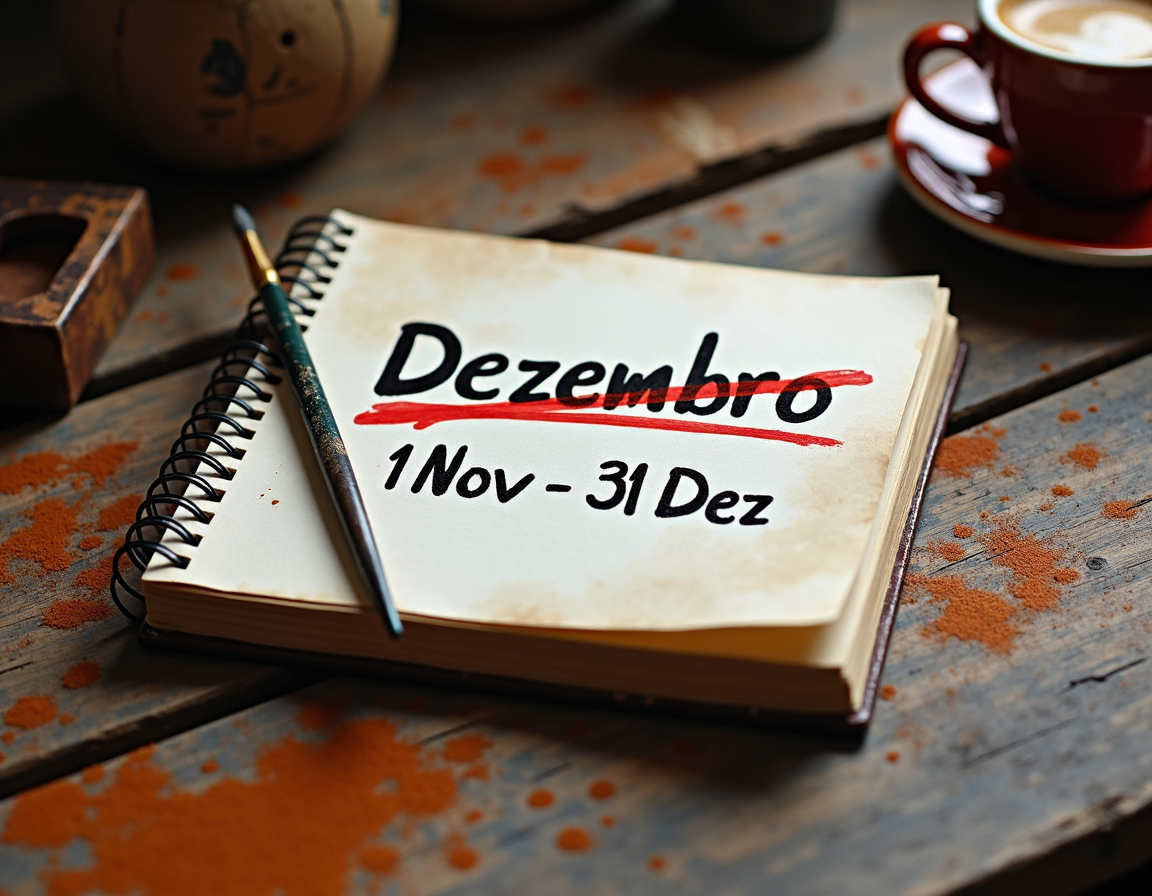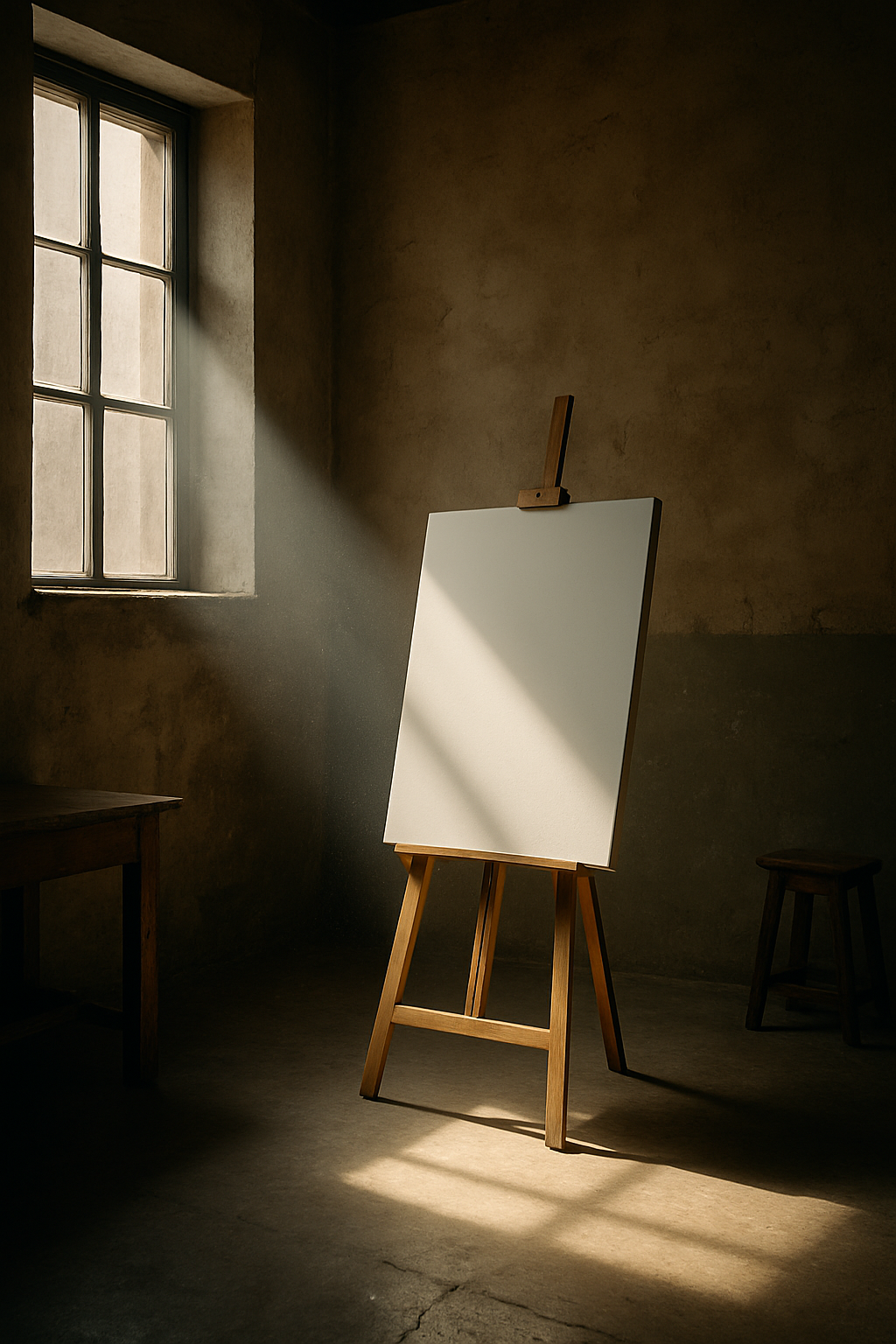Between silence and pigment
A brief return: the studio spoke louder, and silence turned into creation.
After the noise, the studio’s silence remains.
“There are times when silence is the only way to work.” — HMad
It’s been a while since I last wrote here. My bad.
But sometimes the studio speaks louder — and the blog just has to wait for its turn.
The work for the exhibitions ended up multiplying: one in November, another in December.
Two fronts, two tempos, and the same pair of hands trying to keep up.
Between canvases, color, and cold coffee, time simply vanished.
But that’s a good sign — it means the materials took over, and silence turned into creation.
👉 Café conclusion: I wasn’t gone — I was just busy shaping the right kind of noise.
The Colours That Fight With Each Other
Colour theory is one thing. The dramatic relationship between colours on an artist's palette is another, far more entertaining one.
"Colours, like features, follow the changes of the emotions."
— Vincent van Gogh
Colour theory is clear. It talks about complementary colours, harmony, and contrasts that balance each other. All very beautiful.
The artist's heart, however, is a different matter.
There are colours that, on paper, are a dream team. But on the canvas, they're like two cousins at a family party actively avoiding each other. Lemon yellow thinks purple is too dramatic. Green finds red an unbearable show-off.
And then there's the biggest drama of all: blue and orange. Theory says they're complementary, the perfect couple. The reality on the canvas? It's a live couples' argument. One wants to be the serene sky, the other wants to be the explosive sunset. And in the middle is the poor artist trying to play marriage counsellor.
In the end, the canvas is the real therapy room. It's where colours can afford to hate each other, to scream at one another, and where that fight, believe it or not, creates the most beautiful thing of all: life.
👉 Café conclusion: On the canvas, as in life, the best stories always come from the most colourful conflicts.
The Exhibition is Arriving Earlier (And It's Staying Longer)
My next exhibition has been brought forward to November 1st and extended until December 31st. A creative sprint ahead.
"Art, like life, happens at its own rhythm.”— HMad
Well, then. The exhibition that was scheduled for December has decided to take a leap in time.
The gallery called with news. The opening has been brought forward and the duration expanded. The new map is this: the exhibition opens on November 1st and closes on December 31st. Two full months, instead of one.
This completely changes the creative landscape.
And, contrary to what one might think, it hasn't become a marathon. It's become a sprint. A shorter, more intense sprint to have everything ready for November 1st. The adrenaline is different. The pressure too. But the reward is clear: having these two full months, capturing the unique energy of both November and December.
As for what I'm preparing? That conversation is for the coming weeks. The certainty is that the new timeline is injecting a new, urgent energy into the canvases.
Keep checking in here. The news will come as soon as I have it.
👉 Everything else is just café chatter: A sprint now for a long conversation later. The plan is a good one.
Before the first brushstroke
Painting doesn’t start on the canvas, but in the silence that prepares the space for it to happen.
Silence before creation.
“It is not the painter who chooses the painting, it is the painting that chooses the painter.” — Georges Braque
Most people think a painting starts the moment color hits canvas. As if it were instant magic: paint → canvas → artwork.
For me, it starts much earlier. In silence. In emptiness. In that invisible space where the work decides whether it wants to be born.
What comes first
Every series demands its own logic. I’ve seen canvases turn into fragments of memory, into bodies moving, into landscapes to explore. I never repeat the path. Each exhibition forces me to unlearn and invent a new way of thinking.
That’s the risk: walking into a forest I’ve never crossed, with no map, no promise of a way out. And yet — stubbornly hoping there will be light.
Order and chaos at the table
I can sketch plans, fill notebooks with ideas, rehearse in my head. But when the moment comes: color chooses its destiny, gesture takes over, the painting responds. And me? I follow.
It’s in that tense balance between order and chaos that the work reveals itself — and often surprises me more than it surprises you.
The real secret
Maybe the secret is not mastering painting. Maybe it’s just this: preparing the space so that it can happen. Like clearing a path and waiting for the light to break through.
👉 Café conclusion: painting doesn’t begin on canvas, but in the space we open for it to exist. And in December, I’ll be opening that space with you.
The road to December starts here…
The starting point for December’s exhibition: blank canvases, paint tubes and the promise of what doesn’t yet exist.
The journey always begins with blank canvases and unopened tubes.
Before every exhibition, there’s always this moment.
The canvases are still blank. The paint tubes still sealed. The brushes, way too clean.
It doesn’t look like much, but this is where everything begins: from a pile of materials waiting to turn into color, gesture, and line.
👉 In December, there will be a painting exhibition. Until then, coffee, short nights and a lot of creative chaos will fill the gap between these empty canvases and the gallery walls.
👉 Bottom line, with paint still wet
Every journey begins here — between the silence of unopened canvases and the promise of what doesn’t yet exist.
Hidden stories behind famous paintings
Behind every masterpiece lie secrets, thefts, and chaotic lives. Discover the hidden stories of the Mona Lisa, The Scream, and The Starry Night.
Eternal paintings, stories not always visible on the surface.
“Every painting has three stories: the one the artist painted, the one the critic invented, and the one you see.” — Anonymous
Famous paintings seem familiar — you see the image, you recognize it instantly. But behind the surface lie secrets, accidents, and even scandals that don’t usually fit in museum captions.
👉 The Mona Lisa that almost vanished
Before it was the most famous painting in the world, the Mona Lisa was… stolen. In 1911, a Louvre employee tucked it under his coat and took it home. It was missing for two years. Ironically, that “theft of the century” is what turned it into a global icon.
👉 Munch’s Scream that lived through chaos
Edvard Munch described his work as “a scream of nature.” But few know he painted several versions — and one was stolen at gunpoint in Oslo. When it was finally recovered years later, it was damaged. Even the painting itself seems to have lived the despair it depicts.
👉 Van Gogh and the solitary star
“The Starry Night” is now a symbol of poetic hope. But Van Gogh painted it while confined in an asylum, staring at the sky through barred windows. The image that calms us today was born in one of the stormiest moments of his life.
👉 Hidden stories = living art
These backstage stories don’t diminish the works. On the contrary: they make them more human. They remind us that even the “eternal” masterpieces are made of flaws, accidents, and chaotic lives.
👉 The artsy moral of the tale
Behind every famous painting there’s always a hidden story — and that’s what makes them inexhaustible.












